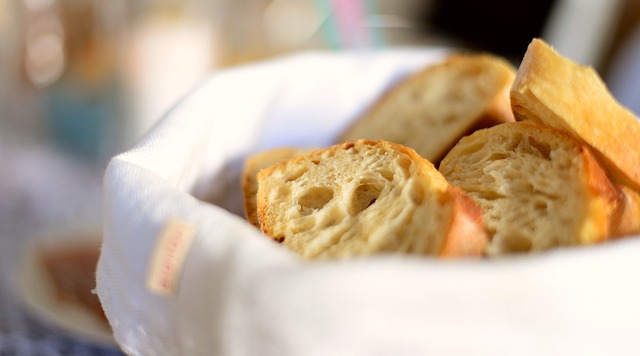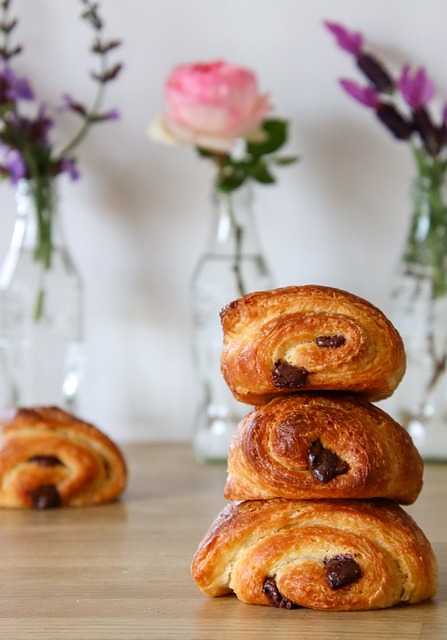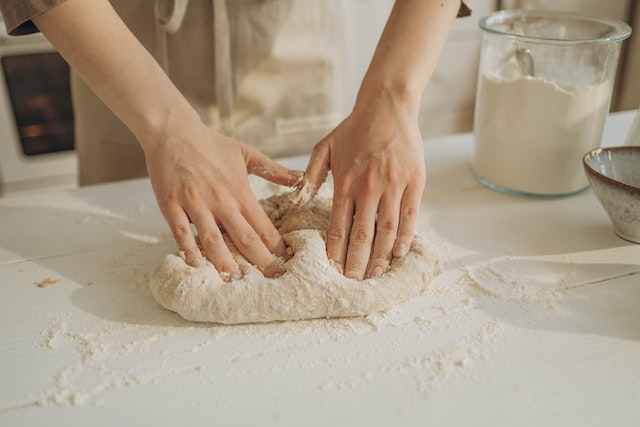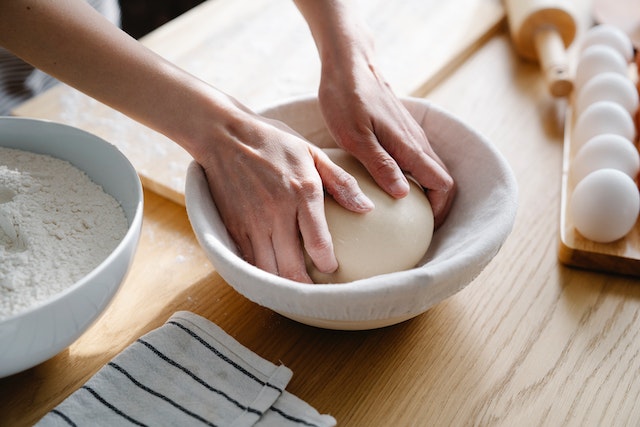
The intriguing world of French bread culture seamlessly blends tradition and savoir-faire to create extraordinary culinary delights. Known across the globe for its unparalleled quality and unrivaled taste, French bread has captured the palates and hearts of food enthusiasts worldwide. From the iconic baguette to the flaky croissant, each bread variety carries with it a rich history and a unique expression of French gastronomy.
French bread culture is deeply rooted in the country’s culinary tradition, dating back centuries ago. Bread holds a revered status in French society, symbolizing sustenance, community, and craftsmanship. With countless boulangeries (bakeries) scattered throughout every street in France, the aroma of freshly baked bread fills the air, inviting passersby to indulge in this national treasure.
The art of bread-making in France hinges upon the perfect blending of three fundamental elements: flour, water, and yeast. Although these ingredients appear simple, expert bakers have honed their skills through generations, mastering the delicate balance of each component. From selecting the finest flour to understanding the precise fermentation and baking techniques, French bakers take immense pride in producing bread that is crisp on the outside, airy on the inside, and bursting with flavor.
The French Baguette
The sight of a freshly baked French baguette is enough to transport you to the bustling streets of Paris. Its elongated shape, crisp golden crust, and soft, chewy interior make it an irresistible symbol of French bread culture.
The history of the baguette can be traced back to the early 19th century in France. Legend has it that Napoleon Bonaparte mandated a decree stating that bakers should produce a long, slender bread that would save space in soldiers’ knapsacks. Thus, the iconic baguette was born.
Ingredients and Technique
The art of making a perfect baguette lies in the harmonious combination of simple ingredients and precise technique. French bakers meticulously select the finest flour, typically using a type known as “T55” or specially milled organic flour. The high protein content and low ash content of this flour ensure a lighter, airier texture.
The dough for a traditional baguette consists of only four ingredients: flour, water, salt, and yeast. The dough is mixed gently and left to ferment slowly, allowing the flavors to develop and the dough to rise. The skilled bakers then shape the dough into the iconic baguette shape, ensuring a tight, uniform crumb structure.
Baking and Crust
One of the most distinct characteristics of a French baguette is its crust. Achieving the perfect crust requires the right baking technique. The dough is baked in a high-temperature oven, creating steam that helps develop a thin, crackling crust while maintaining a soft, chewy interior.
When you take your first bite of a French baguette, you are greeted with a symphony of flavors and textures.

The crust delivers a satisfying crunch, revealing a light and airy interior with a slightly tangy flavor. The texture is soft and chewy, making it the perfect accompaniment to a wide range of dishes or simply enjoyed on its own.
Significance in French Culture
The baguette holds an esteemed place in French culture, not only as a gastronomic delight but also as a symbol of daily life. In France, it is customary to buy fresh baguettes every day, and boulangeries are considered community gathering places. In fact, the French take such pride in their baguettes that they have even been recognized by UNESCO as part of the Intangible Cultural Heritage of Humanity.
Beyond the Baguette
While the baguette undoubtedly reigns as the quintessential French bread, the world of French bread culture extends far beyond this iconic loaf. From rustic country loaves to delicate pastries, there is a myriad of bread varieties and baked goods that showcase the diversity and artistry of French baking.
Country Loaves
There is something comforting about the sight of a crackling, golden country loaf straight from the oven. These breads, often made with a mixture of flours and sometimes incorporating grains and seeds, offer a hearty and wholesome option for bread lovers. With a crisp crust and a dense, chewy crumb, country loaves evoke memories of cozy French country kitchens and slow Sundays spent enjoying a leisurely meal.
Brioche
Slightly sweet, incredibly tender, and rich in butter, brioche is a beloved bread in French cuisine. Its golden, buttery crust and soft, pillowy interior make it a perfect accompaniment to a cup of morning coffee or the star of an indulgent French toast brunch. From classic brioche rolls to intricate braided loaves, this versatile bread offers a touch of elegance to any table.
Fougasse
For bread aficionados seeking a visually stunning treat, the fougasse fits the bill perfectly. This flatbread, often shaped like a leaf or a wheat stalk, is a true masterpiece of creativity and skill. With its intricate patterns and lightly seasoned toppings, fougasse not only delights the taste buds but also pleases the eyes. It is often enjoyed on its own as an appetizer or as a side dish to accompany a variety of savory dishes.

Pain au Chocolat
When it comes to decadent pastries, few can rival the irresistible allure of the pain au chocolat. This delectable treat, made with layers of buttery, flaky pastry dough enveloping rich, gooey chocolate, is a breakfast staple in French bakeries. Each bite transports you to a world of pure delight, as the delicate layers shatter under the pressure of your teeth, releasing a burst of chocolaty goodness.
The Art of Boulangeries
Step inside a traditional French boulangerie, and you will be greeted with a symphony of aromas that waft through the air. The sight of beautifully arranged bread and pastries on display is enough to make any food lover’s heart skip a beat. Boulangeries, the backbone of French bread culture, are not just places where bread is made – they are temples of art, craftsmanship, and community.
The Craftsmanship of Baking:
Behind the scenes of every boulangerie, expert artisans meticulously craft their creations with the utmost care and precision. The process of baking in a boulangerie is a true labor of love, as each step is thoughtfully executed to ensure the highest quality.
Selecting the Finest Ingredients:
The foundation of excellent French bread lies in the quality of the ingredients. Bakers take great pride in sourcing the finest flours, often from local mills that have been producing exceptional flour for generations. The choice of flour, whether it be the classic T55 or a specialty blend, contributes to the unique flavor and texture of the final product.
The Art of Dough Mixing:
Mixing the dough is a delicate dance that requires attention to detail. Bakers carefully measure the ingredients and slowly incorporate them, allowing the dough to develop the perfect gluten structure. This process ensures that the resulting bread has a light and airy crumb, which is essential for achieving the desired texture.
Fermentation and Rising:
After the dough is mixed, it is left to rest and ferment. This crucial step allows the flavors to fully develop and creates the characteristic air pockets that give French bread its distinct texture. Bakers understand the importance of patience and timing, as the dough needs just the right amount of time to rise before it’s ready for shaping.
Shaping and Proofing:
Shaping the dough is where the true artistry of boulangeries shines. Bakers skillfully manipulate the dough, forming it into various shapes that are both visually appealing and functional.
Whether it be the iconic baguette, the intricate braid of a brioche, or the whimsical design of a fougasse, each creation is a testament to the bakers’ craftsmanship.

Baking to Perfection:
The final step in the boulangerie process is baking the bread. Bakers carefully slide the dough into the hot ovens, ensuring that the heat is evenly distributed for optimal results. The precise baking time and temperature are crucial in creating the perfect crust: crisp, golden, and full of flavor. The aroma that fills the boulangerie as the bread bakes is nothing short of intoxicating.
Community and Tradition:
Boulangeries are not just places of baking; they are integral parts of the community. Locals gather at the boulangerie, exchanging pleasantries and stories, while waiting for their freshly baked bread. It is a place where bonds are formed, and traditions are upheld. The boulangerie is a cornerstone of French culture, preserving age-old recipes and passing down the art of baking from one generation to the next.write a section on “Baguette Etiquette”; use headings, subheadings, etc to format the content you generate; add section introduction to the headings and subheadings; use simple words
Baguette Etiquette
Baguettes hold a special place in French culture, and with that comes a set of unspoken rules and etiquette.
Understanding the proper way to handle, store, and consume a baguette is not only a sign of respect for French bread culture but also enhances the overall enjoyment of this iconic loaf.

1. Purchasing: When buying a baguette from a boulangerie, it is customary to wait patiently in line and give your order with a polite “Bonjour” or “Bonsoir,” depending on the time of day. Bakers appreciate customers who know exactly what they want, so have your order ready and be prepared to specify the desired size.
2. Handling: Immediately after receiving your baguette, it is important to handle it with care. Hold it by the bottom end, and avoid squishing or squeezing it excessively. The crisp exterior is fragile and should be preserved until it is time to enjoy the bread.
3. Transporting: Baguettes are best enjoyed fresh, so plan your route accordingly when leaving the boulangerie. It is customary to carry the baguette in its paper sleeve or a cloth bag if available. Be mindful of the length and fragility of the loaf, and avoid placing it where it might get bent or damaged.
4. Storing: If you plan to consume your baguette within a few hours, it can simply be kept at room temperature. However, for longer-term storage, it is advisable to freeze the bread. Before freezing, slice the baguette and wrap individual portions tightly in plastic wrap or place them in a sealable bag. To enjoy, defrost the slices at room temperature or toast them for a crispy texture.
5. Breaking: Breaking a baguette is an art in itself. Rather than using a knife to cut it, it is customary to break off a piece by hand. To do this, hold the end of the baguette with one hand and use the other to snap or pull a section away. This method preserves the integrity of the crust and allows for more organic-shaped pieces.
6. Pairing and Accompaniments: Baguettes are incredibly versatile and can be enjoyed in a multitude of ways. They make a perfect accompaniment to cheeses, charcuterie, and spreads. Popular options include butter, pâté, or a variety of jams. The baguette’s mild flavor also makes it ideal for dipping in soups, stews, or sauces.

7. Sharing: In French culture, breaking bread together is a symbol of camaraderie and togetherness. If you have guests or are attending a gathering, it is customary to offer a portion of your baguette to others. Breaking a baguette and sharing it is a small gesture that brings people closer and strengthens social bonds.
8. Finishing: Baguettes are meant to be enjoyed as fresh as possible. Once a baguette becomes stale, it loses its crispness and becomes chewy. It is considered impolite to waste bread in French culture, so whether you finish it all or have some leftovers, find creative ways to use your baguette. It can be repurposed into breadcrumbs, croutons, or used to make a delicious French toast.
French bread culture is a fascinating world of tradition, craftsmanship, and community. From the iconic baguette to the delicate pastries, each bread variety showcases the skill and dedication of French bakers. The boulangeries, with their tantalizing aromas and welcoming atmosphere, serve as the heart of French bread culture. Understanding the etiquette of handling, storing, and consuming a baguette adds another layer of appreciation for this national treasure. So, whether you’re breaking bread with friends or savoring a warm croissant on a quiet morning, indulging in the artistry of French bread culture is a truly sensory experience that will leave you craving more.
